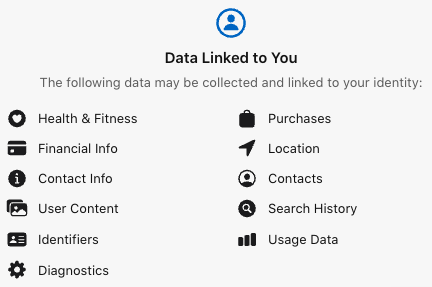The E.U.-U.S. Data Privacy Framework was adopted today by the European Union. This follows their adoption by the U.S. Department of Commerce last week. The action also creates a new U.S.-based judicial body, called the Data Protection Review Court, which will review cases about EU privacy rights that fall under the framework’s jurisdiction. Some privacy analysts feel this isn’t enough protection, as I describe in my story for SiliconANGLE today.
Category Archives: Published work
SiliconANGLE: State data privacy laws are changing fast – here’s what businesses need to know
With no federal data privacy law on the books, states are doubling down on new laws governing the protection of people’s data.
In the past year, Delaware, Indiana, Iowa, Montana, Oregon, Tennessee and Texas have all enacted such laws, more than doubling the number states had them previously — those being California, Colorado, Connecticut, Utah and Virginia.
Although that represents progress, it’s also a challenge for companies doing business nationally to keep track of the subtle differences among the various laws. My analysis for SiliconANGLE here.
SiliconANGLE: How AI and large language models can help cybersecurity firms improve their services
Just about every cybersecurity provider has an artificial intelligence-related story to tell these days. Many of them are first iteration AI-enhanced tools and are just like anything else AI-related: enhancements. Some vendors like Nvidia have taken AI to the extreme, as this diagram shows.

My review of the tools and what they portend for our secure future here on SiliconANGLE today.
SiliconANGLE: Apps under attack: New federal report suggests ways to improve software code pipeline security
The National Security Agency and the Cybersecurity and Infrastructure Security Agency late last month issued an advisory memo to help improve defenses in application development software supply chains — and there’s a lot of room for improvement.
Called Defending Continuous Integration/Continuous Delivery (CI/CD) Pipelines, the joint memo describes the various deployment risks and ways attackers can leverage these pipelines. I describe their recommendations and the issues with defending these pipelines in my latest blog for SiliconANGLE.
SiliconANGLE: The WeChat app is anything but private
What if we had an app on our phones that combined the functions of Facebook Messenger, Venmo payments, MyPatientChart health records and WhatsApp for making voice calls, and also allowed us to download all sorts of mobile apps and games like Apple Inc.’s App Store?
Furthermore, what if such an app had absolutely no privacy controls, so the federal government could monitor, censor and track users, conversations and all activities?
Well, such an app exists. It’s called WeChat and it has 1.2 billion monthly active users. But it is a threat to our privacy, and I explain why in this post for SiliconANGLE.

SiliconANGLE: Will passkeys finally come to pass? A progress report
We’re finally inching closer to curing our addiction to passwords.
This week the FIDO Alliance put together an online event and posted a series of white papers to try to help businesses that want to move forward with passkeys — digital credentials that don’t require usernames and passwords — to host their first 12-step programs for ridding themselves of the scourge that results in huge holes in cloud cybersecurity protection.
“Passkeys are a superior password replacement,” said Tom Sheffield, senior director of cybersecurity for Target Corp. “And you shouldn’t wait to implement them in your business.” Read more of my analysis for SiliconANGLE here.
SiliconANGLE: Polymorphic malware and the rise of new ‘moving target’ defensive security
An old security technology that has gotten little attention is finally ready for a new closeup.
It goes by the name polymorphic code — or alternatively, automated moving target defense or AMTD — and it has been around for nearly a decade. It came into its own around 2017 when was popularized by both malware writers and defenders.
And once again, security professionals are playing another cat-and-mouse game, but this time the stakes are a lot higher thanks to better tools on both sides.
On the malware side, the term describes code that can adapt to conditions and change its behavior to try to avoid detection. It cuts across a wide swath of computing circumstances, including the ability to attack runtime memory, file systems, credentials, virtual machines, workloads, containers and network connections.
You can learn more about this technology and both its uses for good and evil in this post for SiliconANGLE.
Red Cross profile: How Jason Ramlow links service members in times of emergeny
 When members of our armed services are on active duty, they are by definition almost always away from home. What happens when there is an emergency, either with them or their family members? That is where the American Red Cross comes into play with the Emergency communications program, under the umbrella of the Hero Care Network. The person responsible for providing management oversight of this service, in partnership with two casework volunteer leads, in the Missouri Arkansas region is Jason Ramlow, who is a Service to the Armed Forces and International Services Regional Program Manager. He has been working for ARC for close to 23 years. “The program is for family emergency communications, such as a serious illness or family death or birth.”
When members of our armed services are on active duty, they are by definition almost always away from home. What happens when there is an emergency, either with them or their family members? That is where the American Red Cross comes into play with the Emergency communications program, under the umbrella of the Hero Care Network. The person responsible for providing management oversight of this service, in partnership with two casework volunteer leads, in the Missouri Arkansas region is Jason Ramlow, who is a Service to the Armed Forces and International Services Regional Program Manager. He has been working for ARC for close to 23 years. “The program is for family emergency communications, such as a serious illness or family death or birth.”
You can read more in my profile of Jason here.
SiliconANGLE: ‘Zero trust’ was supposed to revolutionize cybersecurity. Here’s why that hasn’t happened yet.
Despite more than a decade of talk, the seminal concept in cybersecurity of zero trust — the assumption that no user or device on a computer network can be trusted — hasn’t been implemented nearly as widely as one might expect from all of the attention.
The problems include numerous practical and perceptual obstacles, coupled with a complex collection of products that need careful coordination to deliver on its promises. The upshot: Zero trust won’t be a silver bullet for ever-growing cybersecurity woes anytime soon. Read my report for SiliconANGLE here to learn more.
SiliconANGLE: DNS is once again front and center for exploits and security policy
Two recent events are once again bringing the internet’s foundational Domain Name System into the news, and not in a good way.
The first event involving the DNS last week was a warning from the Cybersecurity Infrastructure and Security Agency issued on Friday for version 9 of the Berkeley Internet Name Domain, or BIND.
The second news item relevant to DNS concerns an open letter issued Friday by Vint Cerf, Stephen Crocker, Carl Landwehr and several others, entitled “Concerns over DNS Blocking.”
More specifics can be found in my story for SiliconANGLE here.